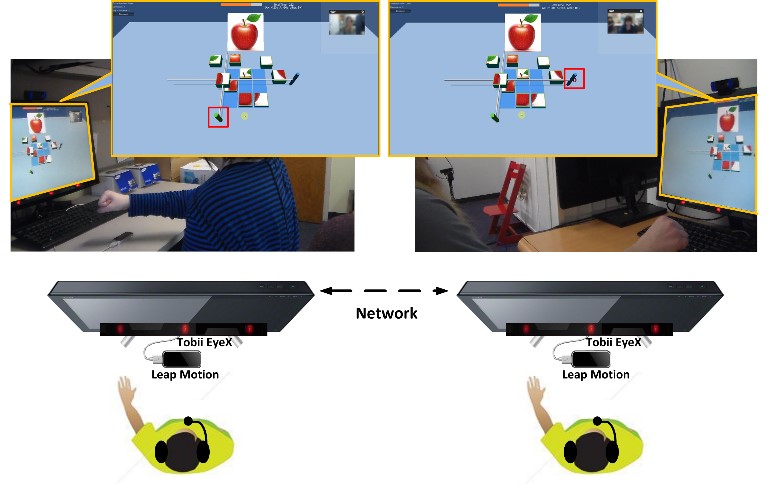Collaborative Virtual Environments
Personnel: Lian Zhang, Huan Zhao, Joshua Wade
Goals/Objectives:
- Explore collaborative virtual environments for autism spectrum disorder (ASD) intervention
- Understand and facilitate collaboration and communication of children with ASD in peer-mediated interactions
Outline:
Autism Spectrum Disorder (ASD) is a neurodevelopmental disorder characterized by deficits in social interaction and communication with tremendous individual and societal costs. A Collaborative Virtual Environment (CVE) is a computer-based, distributed, virtual space for multiple users to interact with one another and/or with virtual items. A CVE has the potential to support flexible, safe and peer-based social interactions. We have designed novel CVEs in order to understand and facilitate collaboration and communication skills of children with ASD in peer-mediated interactions. These CVEs represent a meaningful technological platform capable of wide-use and impact on social functioning. This project also aimed to effectively measure important aspects of dynamic interactions within the environment and realize strategies for altering the environment to improve these aspects of interaction.

Publications:
- Zhang, Lian, Megan Gabriel-King, Zachary Armento, Miles Baer, Qiang Fu, Huan Zhao, Amy Swanson, Medha Sarkar, Zachary Warren, and Nilanjan Sarkar. “Design of a Mobile Collaborative Virtual Environment for Autism Intervention.” In International Conference on Universal Access in Human-Computer Interaction, pp. 265-275. Springer International Publishing, 2016.
- Zhao, Huan, Amy Swanson, Amy Weitlauf, Zachary Warren, and Nilanjan Sarkar. “A Novel Collaborative Virtual Reality Game for Children with ASD to Foster Social Interaction.” In International Conference on Universal Access in Human-Computer Interaction, pp. 276-288. Springer International Publishing, 2016.
- H. Zhao, A. Swanson, A. Weitlauf, Z. Warren, and N. Sarkar, “Hand-in-Hand: A Communication-Enhancement Collaborative Virtual Reality System for Promoting Social Interaction in Children with Autism Spectrum Disorders”, accepted by IEEE Transactions on Human-Machine Systems.
- A. Sarkar, J. Wade, and Z. Warren, “Understanding and Improving Collaborative Skills Among Individuals with ASD in a Distributed Virtual Environment,” in International Conference on Universal Access in Human-Computer Interaction, 2015, pp. 669-680. [source code]
Continuation of this work: Virtual Reality-based Collaborative Activities Simulator (ViRCAS)